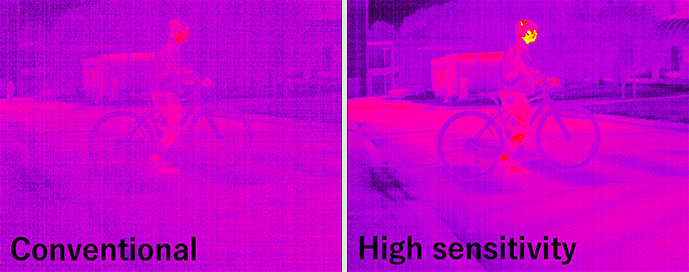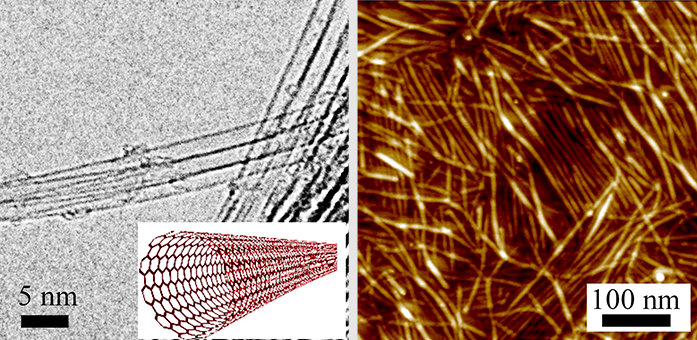www.electronics-usa.com
11
'23
Written on Modified on
NEC Corporation News
NEC DEVELOPS NEW HIGHLY SENSITIVE UNCOOLED INFRARED IMAGE SENSOR
This is the world's first high-sensitivity uncooled infrared image sensor that uses high-purity semiconducting carbon nanotubes (CNTs).

NEC Corporation has succeeded in developing the world's first high-sensitivity uncooled infrared image sensor that uses carbon nanotubes (CNTs). This was accomplished using NEC’s proprietary extraction technology. NEC will work toward the practical application of this image sensor in 2025.
Infrared image sensors convert infrared rays into electrical signals to acquire necessary information, and can detect infrared rays emitted from people and objects even in the dark. Therefore, infrared image sensors are utilized in various fields to provide a safe and secure social infrastructure, such as night vision to support automobiles driving in the darkness, aircraft navigation support systems and security cameras.
There are two types of infrared image sensors, the "cooled type", which operates at extremely low temperatures, and the "uncooled type", which operates near room temperature. The cooled type is highly sensitive and responsive, but requires a cooler, which is large, expensive, consumes a great deal of electricity, and requires regular maintenance. On the other hand, the uncooled type does not require a cooler, enabling it to be compact, inexpensive, and consume low power, but it has issues of inferior sensitivity and resolution compared to the cooled type.

(Left) Electron micrograph and image of single-walled CNTs; (Right) Atomic microscope image of a high-purity semiconducting CNT film
The newly developed infrared image sensor is the result of these achievements and know-how. NEC applied semiconductor-type CNTs based on its proprietary technology that features a high TCR, which is an important index for high sensitivity. As a result, the new sensor achieves more than three times higher sensitivity than mainstream uncooled infrared image sensors using vanadium oxide or amorphous silicon.
The new device structure was achieved by combining the thermal separation structure used in uncooled infrared image sensors, the Micro Electro Mechanical Systems (MEMS) device technology used to realize this structure, and the CNT printing and manufacturing technology cultivated over many years for printed transistors, etc. As a result, NEC has succeeded in operating a high-definition uncooled infrared image sensor of 640 x 480 pixels by arraying the components of the structure.

(Left) Device structure; (Right) Photograph of CNT infrared array device
Part of this work was done in collaboration with Japan’s National Institute of Advanced Industrial Science and Technology (AIST). In addition, a part of this achievement was supported by JPJ004596, a security technology research promotion program conducted by Japan’s Acquisition, Technology & Logistics Agency (ATLA).
www.nec.com

